COVER STORY
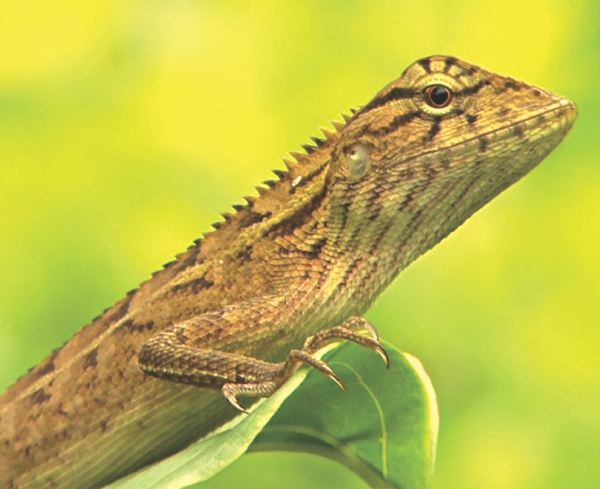
Guardians of a Sanctuary
Nature is life. If nature thrives, we do too. The area of Bangladesh is too small for the vast population we have. It is a problem, but it can be a positive opportunity as well. We can utilize our manpower to the betterment of the nation. We are lucky to have such natural diversity and beauty within this small area. But due to over population and the greenhouse effect, these natural resources are dying out. People are cutting down forests to make room for housing and faraming. Animals and birds are losing their natural habitats. Illegal poaching is contributing to a drastic fall in the number of animals in our forests. Therefore our forests are decreasing day by day. The Forest Department and USAID has started an initiative called Nishorgo in an attempt to save forests and wildlife.
..................................................................................................
Rafi Hossain
Teknaf Wildlife Sanctuary (TWS) is a Protected Area (PA) broadly classified as a tropical evergreen forest. It has been under the realm of co-management since 2005 when the USAID funded project IPAC's preceding project 'Nishorgo Support Project' started working with 5 pilot areas. Teknaf Wildlife Sanctuary, renamed thus in 2010 from the former Teknaf Game Reserve, covers an area of 11,615 hectares.
The Teknaf area as a whole has been well studied in the past and is one of the most bio-diverse areas of Bangladesh. An exceptional 286 species of birds have been recorded from the Teknaf peninsula, including coastal and wetland habitats. The PA still supports the largest population of Asian elephants in Bangladesh.
 The Nishorgo Support Project (NSP) introduced the concept of co-management Committee to assist the Forest Department in their endeavors to conserve the sanctuary. As a result, the locals are more intricately involved in the preservation of their natural surroundings. The population living on the landscape area is 1,49,896 with about 22,211 households. The Nishorgo Support Project (NSP) introduced the concept of co-management Committee to assist the Forest Department in their endeavors to conserve the sanctuary. As a result, the locals are more intricately involved in the preservation of their natural surroundings. The population living on the landscape area is 1,49,896 with about 22,211 households.
Due to increased human interference especially after a massive influx of some 2,50,000 Rohingya refugees from Myanmar, forest covered in the sanctuary has been decreasing since 1990s. Some 119 villages make use of the PA, of which 52 are located within the PA boundary, where five are inhabited by ethnic minorities.
Local Communities
Villages surrounding the forest were set up during the mid-1980s by Forest Department who leased small areas of land to a certain number of households within the Reserve Forest area. In return, the villagers were expected to help the Forest Department in raising the plantations and undertake other duties like regular forest patrolling.
Most of the people living in the area are involved in agricultural farming and fisheries. Farming is the primary occupation of local people, which accounts for almost 80% of the total population. It is evident that more than 50% of the population, especially the young and inexperienced is unemployed and there are opportunities to introduce them to short term vocational training. Villagers are provided with hands-on training in constructing nursery, cow farming, fish culture, sewing, furniture building, rickshaw pulling and poultry farming.
Biodiversity
Teknaf Wildlife Sanctuary is broadly classified as a tropical evergreen forest. The vegetation of this sanctuary originally consisted of tall mixed evergreen trees, which primarily occur in deep valleys and shaded slopes dominated by unique Garjan trees. Now the hills are mainly denuded, dominated by sun grass, herbs and shrubs and brush woods.
The sanctuary harbors a wide diversity of tropical semi-evergreen flora and fauna. TWS contains 55 mammals like the Slow Bengal Loris and the Masked Palm Civet; 286 birds including the White-Bellied Seagull, White-Browed Piculet along with some Kingfisher and Bittern species; 56 reptiles, 13 amphibians, and 290 species of plants. Currently, Asian Elephants, Wild Boars, Clouded Leopards, Hog-badgers and Deer are found in plenty.
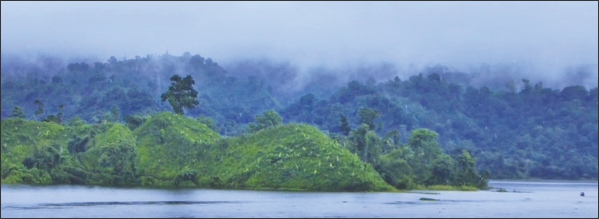
Sanctuary Threats
Overall, the sanctuary is still suffering from encroachment, illegal removal of forest produces, and conversion of the current land use in an unplanned way. Climate change refugees from the neighboring Arakan (the Rohingyas) have migrated to the area around TWS imposing a greater threat to its sustainable maintenance. Lack of adequate employment and the ever increasing populations also have their added effect on the TWS. More stringent law enforcement is thus very much required as well as the continued efforts of the local communities with the concerned departments and ministries, to collaboratively conserve the sanctuary.
Nishorgo Network
TWS is a valued member of the Nishorgo Network, Bangladesh's growing group of forest and wetland PAs being conserved through co-management. Co-management brings together community, government and other stakeholders to work together to conserve Bangladesh's rich natural heritage and eco-system services in a manner that contributes to long-term sustainable development, increased food security, and integrated climate change adaptation and mitigation. Nishorgo Network co-management shares roles and responsibilities between communities and government, demonstrating economic benefits of PA conservation to local communities through eco-tourism and sustainable alternative income generation activities, as well as by actively involving them in conservation management of PAs through participation in co-management organizations and joint patrol initiatives. The Nishorgo Network actively engages women, youth and ethnic minorities in co-management, and provides a foundation of good governance.
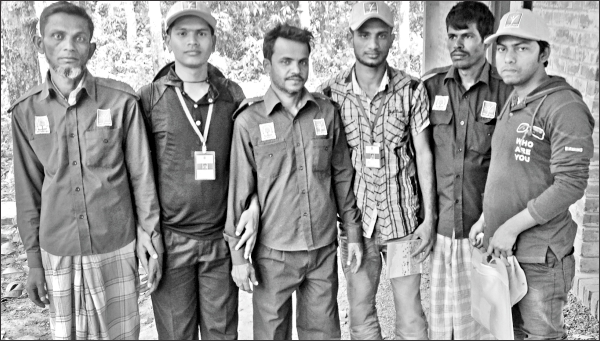
Co-Management & Teknaf Wildlife Sanctuary
Teknaf Wildlife Sanctuary is a leader of co-management for effective conservation, beginning in 2004 with USAID's Nishorgo Support Project and currently with support from USAID's Integrated Protected Area Co-Management (IPAC) project implemented in collaboration with the Government of Bangladesh's Ministry of Environment and Forests and Ministry of Fisheries and Livestock. Co-management highlights in TWS include the following:
-Formation and re-election of a co-management platform including Co-Management Committee and Council; Village Conservation Forums (VCFs) and Peoples' Forum (PF).
-Establishment of Community Patrol Groups (CPGs) engaged in regular Joint Patrols with Forest Department field staff.
-Development of eco-tourism support for TWS, including training a cadre of eco-guides from local communities as well as initiating the potential establishment of eco-cottages near the Sanctuary.
-Entrance Fee Revenue collection and sharing mechanism in place, ensuring 50% of tourism fees accrue to the CMC.
-Alternative Livelihoods Development training and support for TWS-dependent communities, including sustainable value chain support and MoUs between local communities and national buyers in both fisheries and handicrafts.
-Training and capacity building as well as leveraging additional financial support to sustain effective co-management of TWS conservation into the future
-USAID's Integrated Protected Area Co-management (IPAC) Project in collaboration with the Ministry of Environment & Forests (MOEF) and Ministry of Fisheries & Livestock (MOFL) has taken significant steps to conserve TWS includes:
-Training forest dependent communities on different AIGAs including weaving, bamboo craft making (where the intricate weaving of the Khareng baskets by the community women is gaining popularity), fish farming and nursery plantation,
-Eco-tourism efforts in the area include setting up signboards, availability of eco-guides, eco-rickshaws and raising adequate awareness regarding eco-cottages.
-A Nature Interpretation Centre constructed through private-public partnership also functions to aid visitors to gain a deeper understanding of co-management and conservation.
-Currently 18 eco-tour guides and 52 eco-rickshaw pullers have been trained and 419 CPG members have been trained to help with the protection of TWS.
-Introducing Improved Cooking Stoves (ICS) for reduced indoor pollution via a partner organization.
-Development of 3 CMC and 3 Peoples Forum to overlook the Sanctuary's management
-Organizing 114 VCF members to increase consciousness and promote conservation focused actions.
-114 Nishorgo Sahayak (facilitators) have been trained to execute conventions and administering co-management activities, while 9 clubs involving youth to raise conservation awareness are currently active.
We are a part of nature. It is our duty to preserve it. These wildlife conservatories can help to preserve forests and attract tourists. Eco-tourism could generate revenue as well. It is high time for us to take such initiatives. Involving local people makes these initiatives more sustainable. When NGOs start these projects, it usually turns out to be short-term if the government doesn't back them up. But we have to continue such projects for our own good in order to save our forests, our wildlife and our ecosystem.
Cover Art by Ujjal Ghose
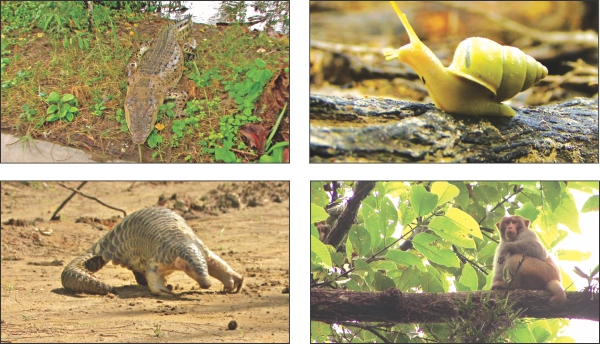
Khurshida Begum:
An Exemplary Figure
Ms. Khurshida Begum of Teknaf Wildlife Sanctuary (TWS) received an “Honorable Mention” prize for the Collaborative Partnership on Forests (CPF) 'Wanagari Maathai Award 2012'. The award is given in recognition of outstanding contributions to preserve, restore and sustainably manage forests.
Ms. Begum received this award as a pioneer in her community for making women more visible in the conservation of natural resources including forests and wetlands.
As in 2004, the Bangladesh Forest Department at Ministry of Forests & Environment and USAID's Nishorgo Support Project established a collaborative management of natural resources between the government and the local communities.
In 2006, Ms. Khurshida Begum took a bold initiative by forming a female Community Patrol Group (CPG) with 28 women at Kerontali for the forests protection in TWS. Together, these women along with forest guards from forest department took upon challenges of conserving the sanctuary against poaching and illegal logging. Following Khurdishda's initiative, now there are four other female patrol groups in actively working in Bangladesh.
Ms. Khurshida, a young widow in the most conservative part of the region, took commendable initiatives in forests protection, promoting female education and contributing in workplace with male counterparts.
She also worked for child and maternal health care, communal hygiene, school maintenance and various other issues. She was the first ever female in the locality who advocated for conservation of unique bio-diversity in the wildlife sanctuary and organized a group of fellow-women to come forward in protecting TWS from illegal poaching. On top of that, she is now an elected member of the Union Parishad.
Khurshida's success is the reflection of dedication and commitment shown by the female CPG members across the network of protected areas.
Ms. Khurshida Begum traveled to Rome, Italy, to receive the award on 27 September, during the Food and Agriculture Organization's (FAO) World Forestry Week meeting. Through the IPAC project, Forest Department and USAID have been successful in establishing and supporting the Nishorgo Network, a national network of forest and wetland protected areas conserved through co-management by bringing together government and community groups to share the roles, rights, and responsibilities of ecosystem conservation.
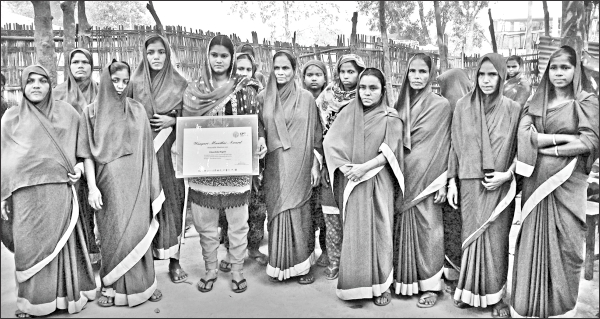
Copyright
(R) thedailystar.net 2013 |